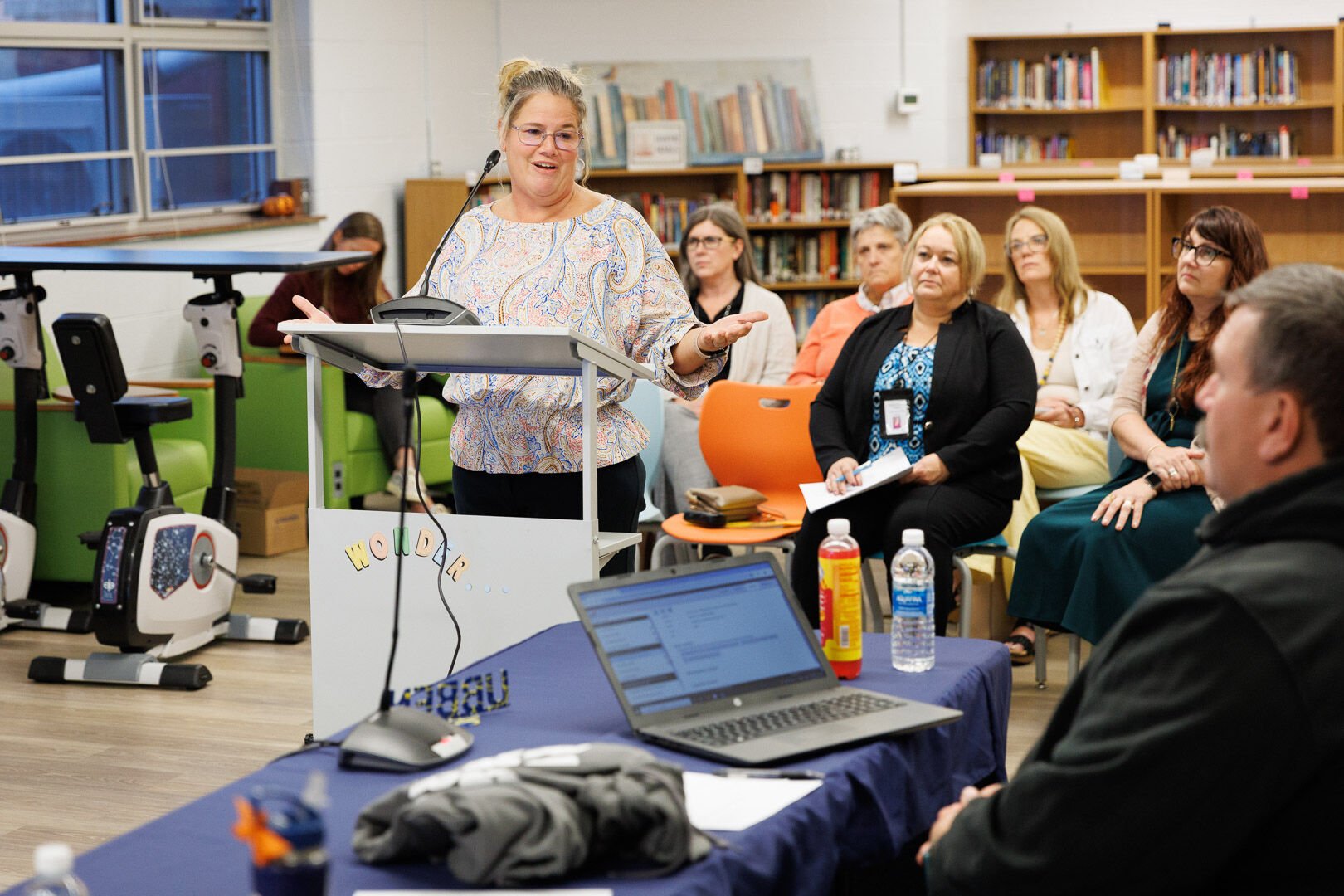Principals from both Rappahannock public schools presented their annual school improvement plans to the School Board Tuesday, outlining their goals and benchmarks for achievement in all areas of study at each school.

2024-10-08-schoolboard-2-web.jpg
RCES principal, Jennifer Wissinger addresses the School Board Tuesday evening.
Jennifer Wissinger, Rappahannock County Elementary School (RCES) principal, presented her school’s plans, which focus mainly on literacy and math skills.
RCES goals include:
-
Integrate literacy-focused instruction in all subjects, not just reading and English language arts
-
All students, grades PreK-7, will end the academic year with a year’s worth of growth in their reading levels, with a particular focus on closing learning gaps for students with disabilities
-
All students will improve fluency, speed and accuracy in math problem solving
-
Reduce chronic absenteeism by 10%
Plans to achieve the goals:
-
Increase use of phonetic and reading exercises and programs to build up students’ foundational reading skills
-
Begin a new K-5 reading program
-
Focus on shared reading — an interactive exercise where students read along with the guidance of a teacher
-
Review Virginia Kindergarten Readiness Program (VKRP) scores with a math specialist to identify areas needing the most improvement
-
Implement a tiered support system based on a student’s individual instructional needs, with more intense interventions for students who need more one-on-one or customized support
-
Use a district-wide tiered absentee system to monitor at-risk and chronically absent students and intervene with parents when necessary
Mary Jane Boynton, Rappahannock County High School (RCHS) principal, presented plans for the high school, which focus mainly on science and career and work readiness.
RCHS goals include:
-
Raise percentage of students passing science end-of-year assessments from 65% to a minimum of 70% — the pass rate needed for full accreditation in the subject
-
Increase math pass rates from 58% to 66%, and reading pass rates for special education students from 35% to a minimum of 42%
-
Outline clear parameters for seven high school academies for students pursuing career, trade or two-to-four year college programs
-
Decrease chronic absenteeism by 10%
Plans to achieve goals:
-
Implement targeted instructional strategies — such as clear learning objectives and checking for student understanding on topics — in all subjects with an emphasis in science
-
Train for “teaching to the block” to better equip teachers to utilize the full 80-90 minute class period each day
-
Review student progress and discuss how to adapt to class’ needs at regular “data meetings”
-
Increase individual instruction, progress monitoring and specialized interventions in reading for special education students
-
Develop clear classes and prerequisites for each of the seven academies
-
Institute school-wide attendance incentive programs guided by student input
“Running a school in all of these aspects is so scientific,” Superintendent Shannon Grimsley said. “It does require master diagnosticians in the building … I’m really impressed by the plans that have been put forward.”
Lobbyist update
Grimsley provided an update to the board on the school system’s new lobbyist in Richmond, and said the lobbyist’s work is “already paying dividends” on getting language into legislation that would increase state aid to the school district.
An initial $20,000 payment retained the lobbyist to “research and find if it’s plausible” to get the funding increase, Chair Wes Mills said. If the lobbyist’s work proves fruitful, another $30,000 will be needed to retain her to “act on our strategy” during the legislative session, Mills said.
Ireland Hayes is a reporter for Foothills Forum, a nonprofit organization that supports local news in Rappahannock County.
Sign up for Rapp News Daily, a free newsletter delivered to your email inbox every morning.




